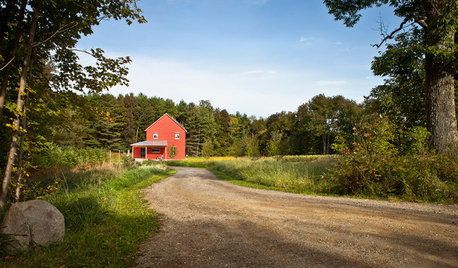Oh the Gall
runktrun
15 years ago
Related Stories


ENTERTAININGHouzz Guide: How to Set a Table
Here’s everything you need to know to prep your table for a get-together
Full Story
THE ART OF ARCHITECTUREFinding the Perfect Home for a New House
Sun, soil, water, topography and more offer important cues to siting your house on the land
Full Story
LIFEThe Moving-Day Survival Kit: Lifesaving Items and Niceties
Gather these must-haves in advance for a smooth move and more comfortable first days in your new home
Full Story

ARCHITECTUREWhy Authenticity in Architecture Matters
Is your home's exterior making a promise it doesn't keep? Learn why integrity and consistency are essential for architectural success
Full Story
REMODELING GUIDESHouzz Tour: A Drive in the Country Ends in a Remodel
A couple out for a spin find a cottage with untapped potential. Their redo highlights lovely views and midcentury charm
Full Story
HOUSEKEEPINGAnother Independence Day: When Kids Can Do Their Laundry
Set yourself free and give your child a valuable life skill at the same time
Full Story
CONTEMPORARY HOMESHouzz Tour: A Creative Renovation Says Hello
A bland brick expanse at the street side of a corner house has become a very cool local landmark. All it took was a simple thought
Full Story
FURNITURE10 Highlights from High Point 2011
Catching our eye at fall's must-see furniture show: live-edge wood, peacocks, wild lights and shine
Full Story








diggingthedirt
NHBabs z4b-5a NH
Related Professionals
Belmont Landscape Architects & Landscape Designers · Aurora Landscape Contractors · Hartford Landscape Contractors · Ashburn Landscape Contractors · Brownsville Landscape Contractors · Columbine Landscape Contractors · Duarte Landscape Contractors · Streamwood Landscape Contractors · Bethany Decks, Patios & Outdoor Enclosures · Lake Arrowhead Decks, Patios & Outdoor Enclosures · Meridian Decks, Patios & Outdoor Enclosures · Midlothian Decks, Patios & Outdoor Enclosures · Southampton Decks, Patios & Outdoor Enclosures · Spokane Decks, Patios & Outdoor Enclosures · West Chester Decks, Patios & Outdoor Enclosuresterrene
viburnumvalley
diggingthedirt
runktrunOriginal Author
terrene
diggingthedirt
WendyB 5A/MA
ego45
claireplymouth z6b coastal MA
playintheyard
terrene
runktrunOriginal Author
claireplymouth z6b coastal MA